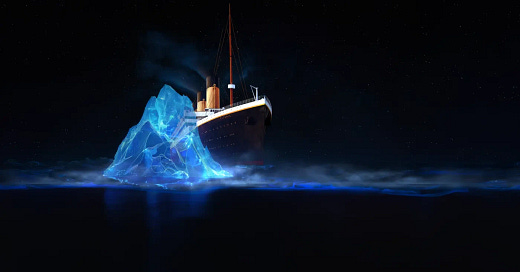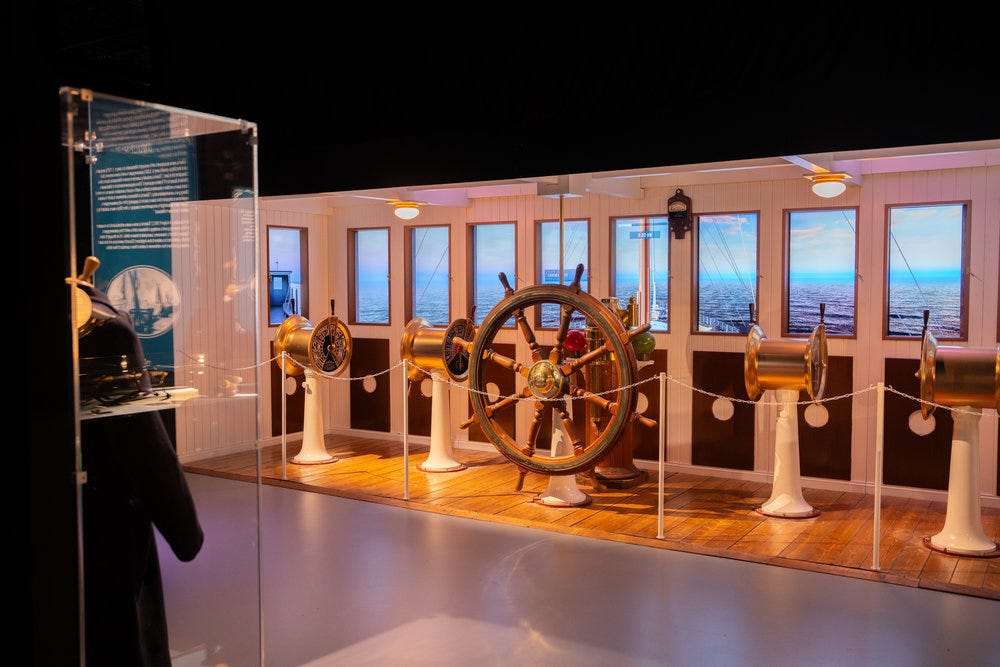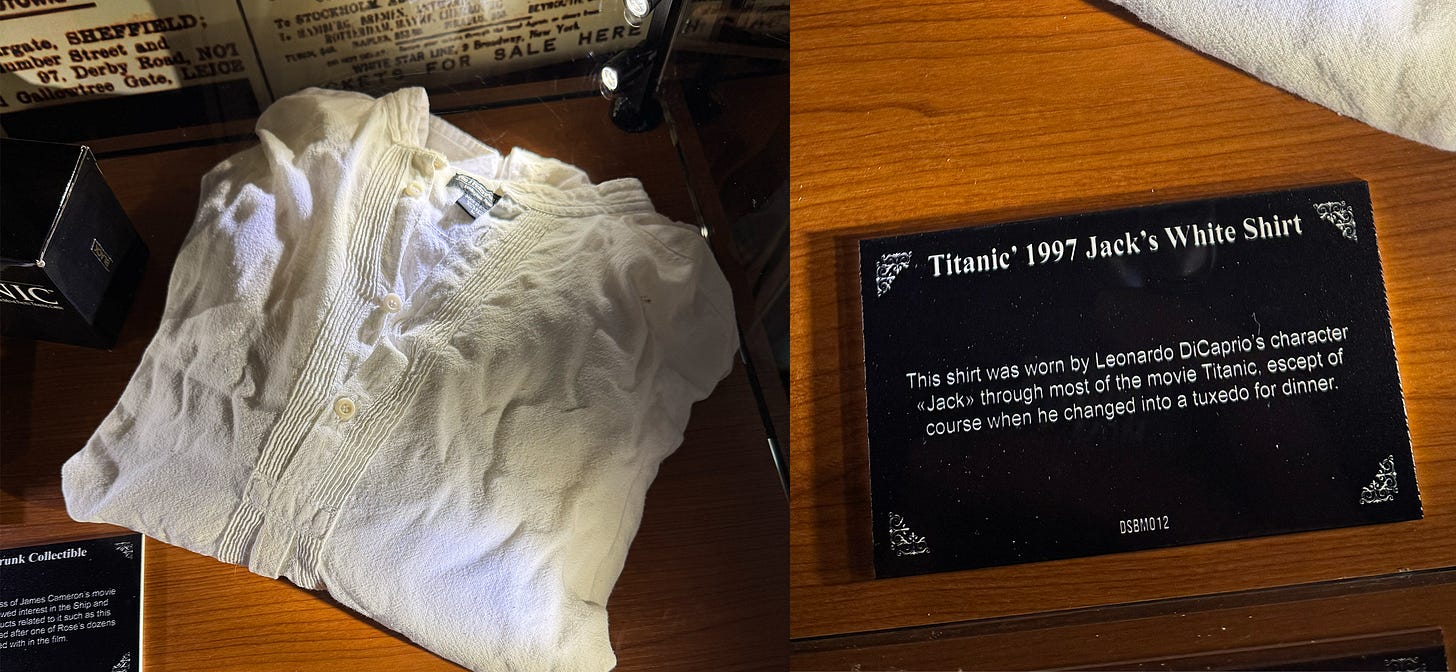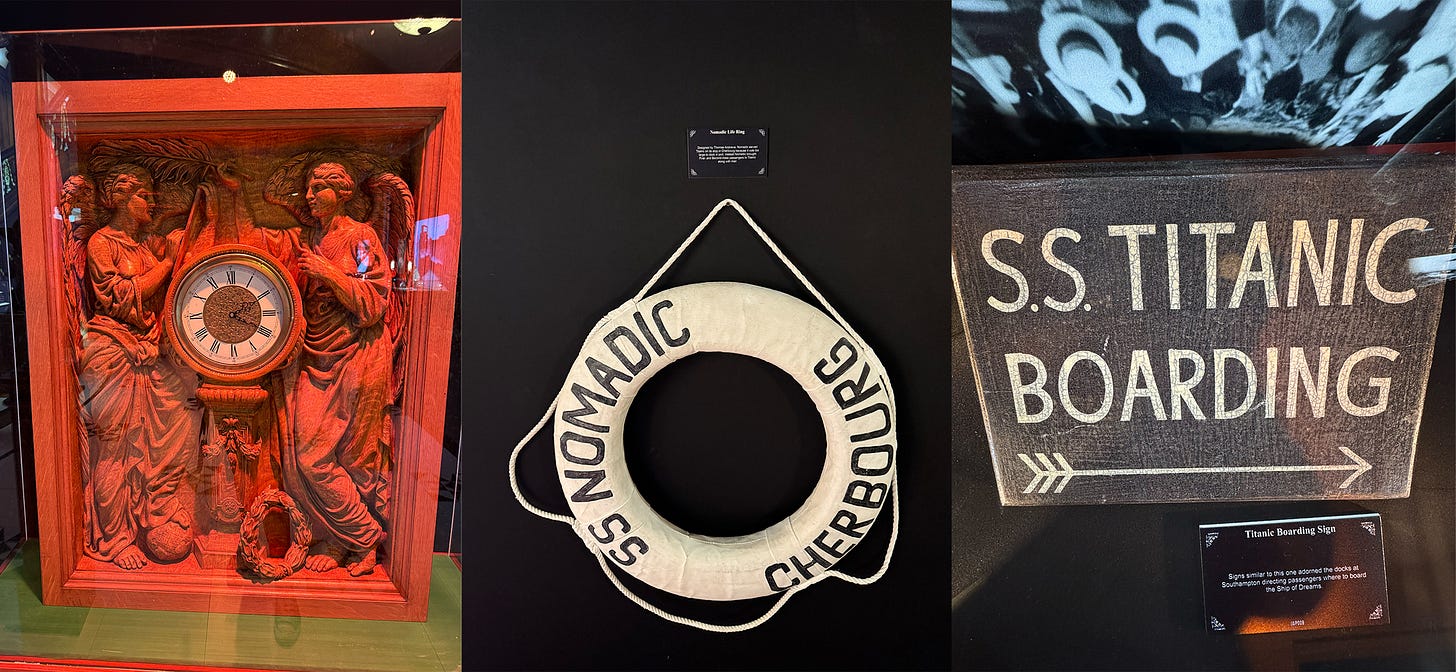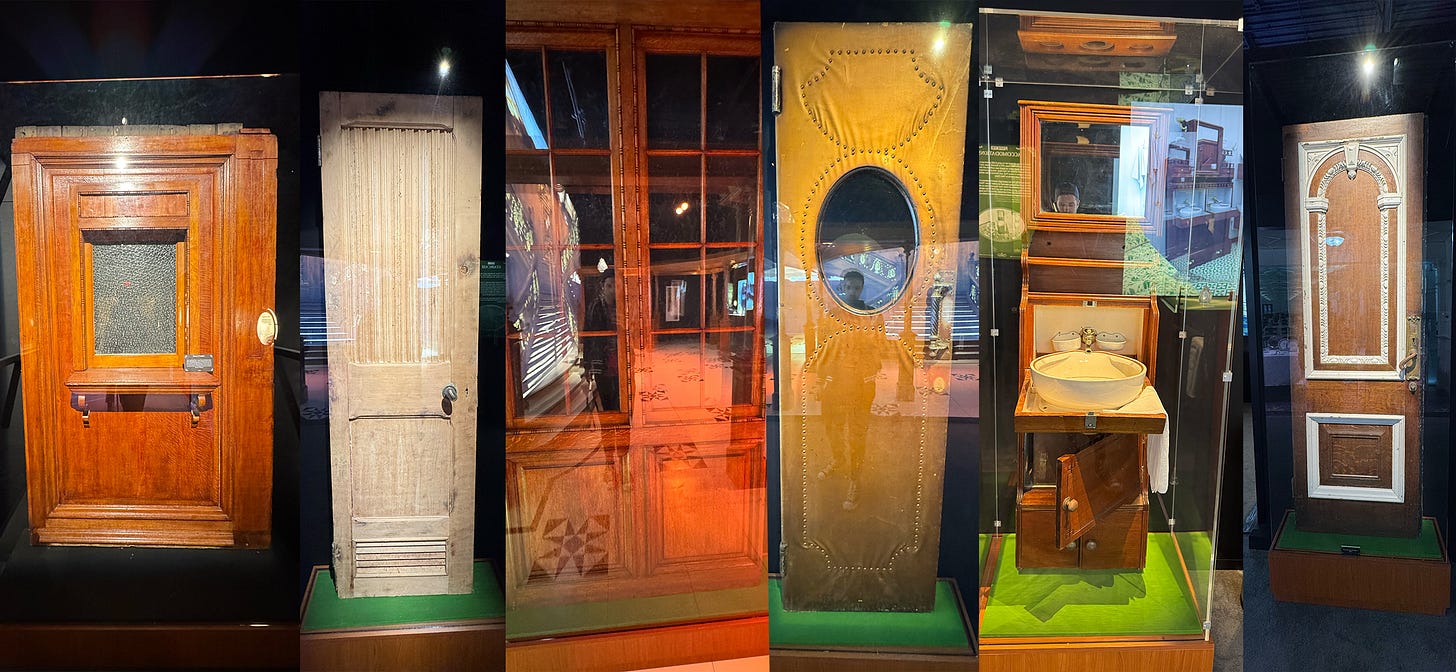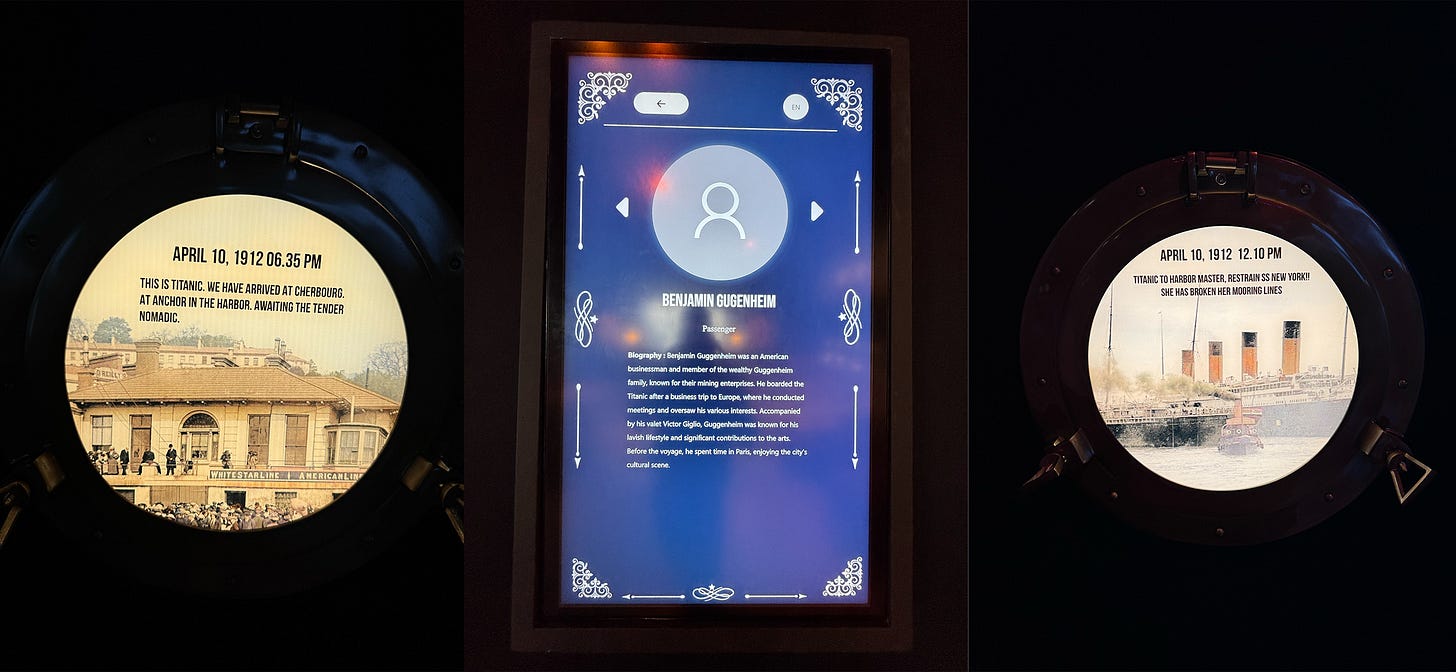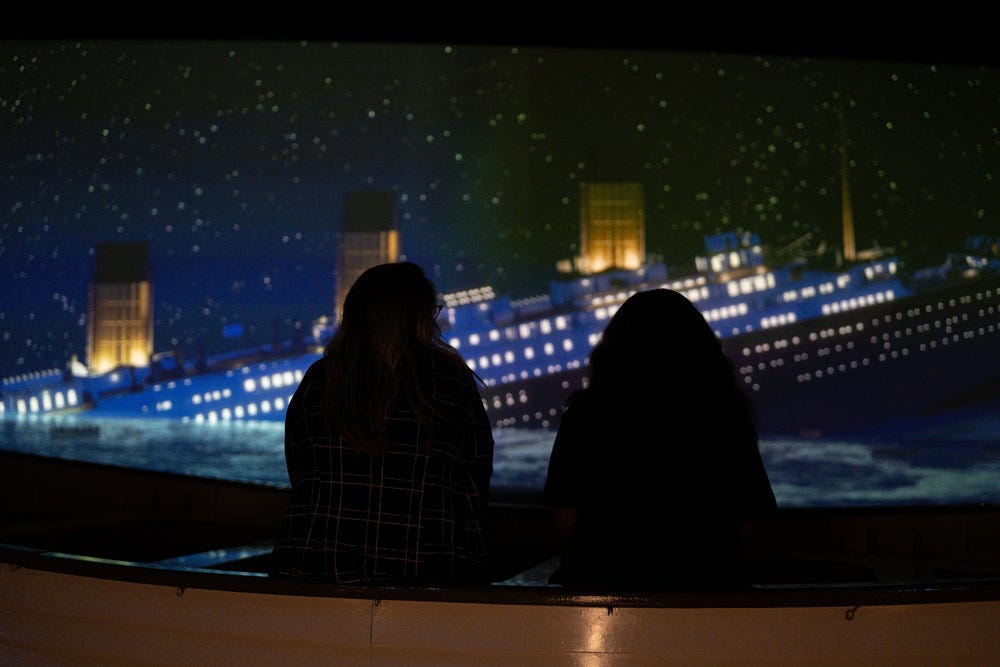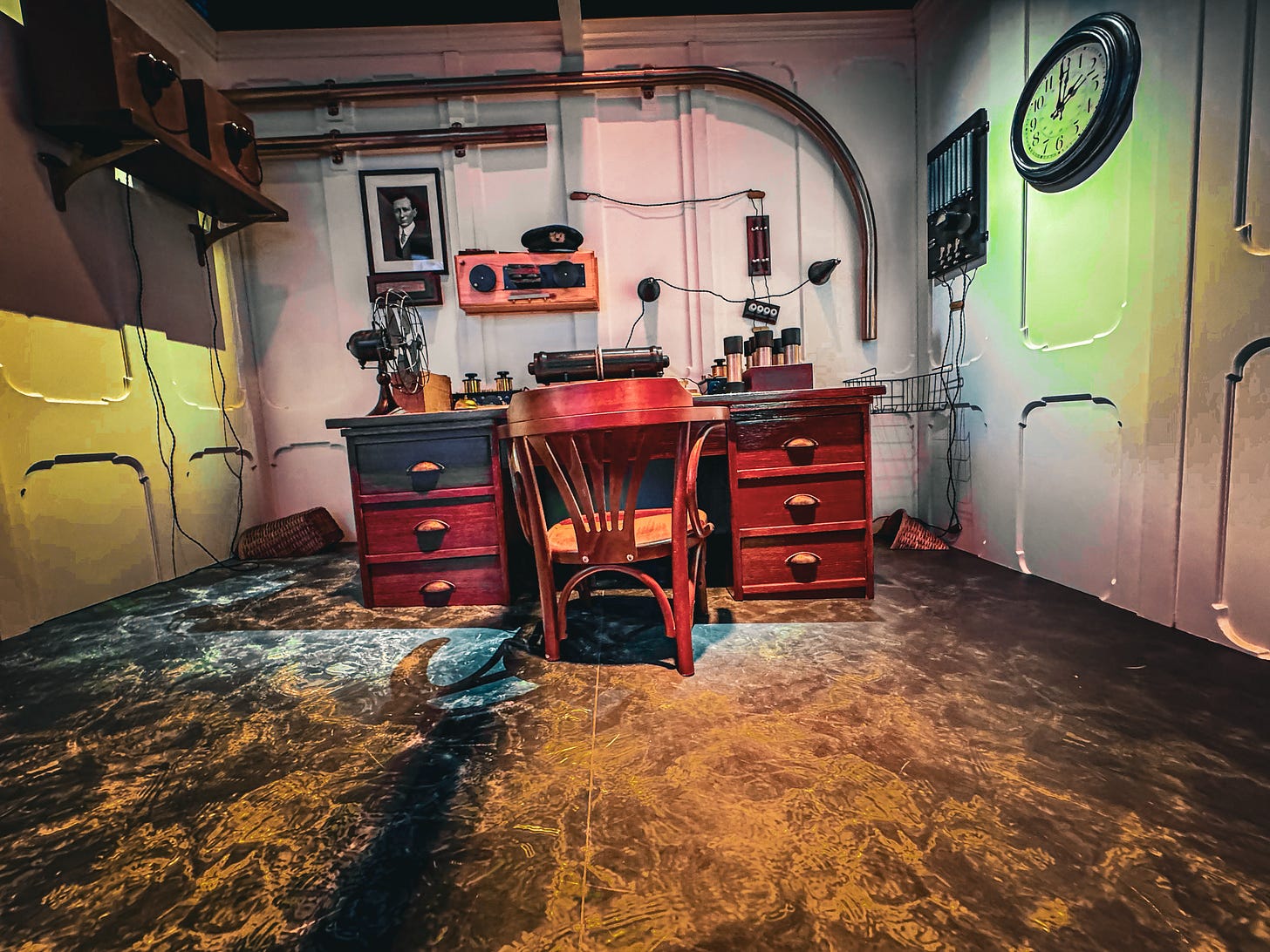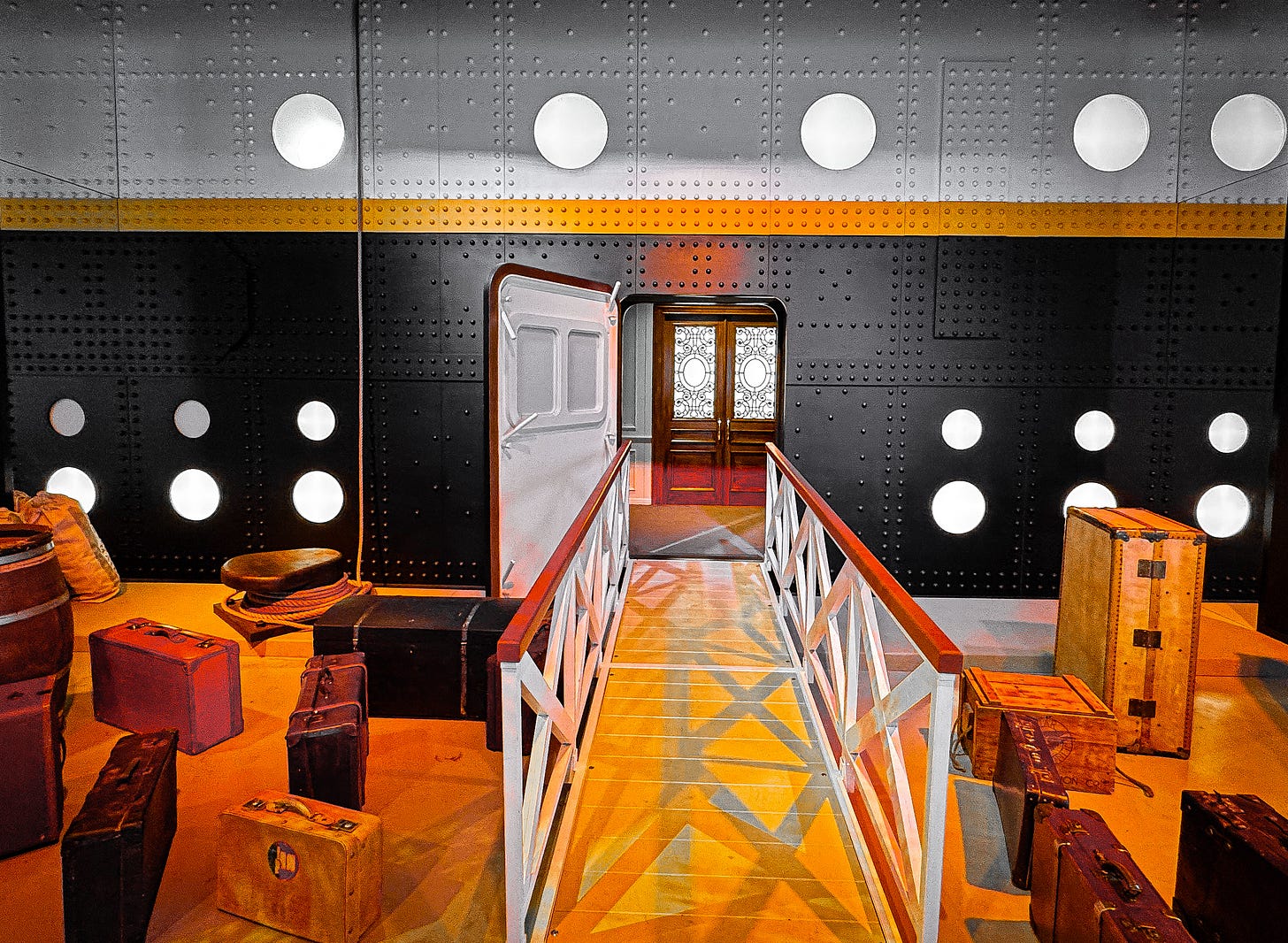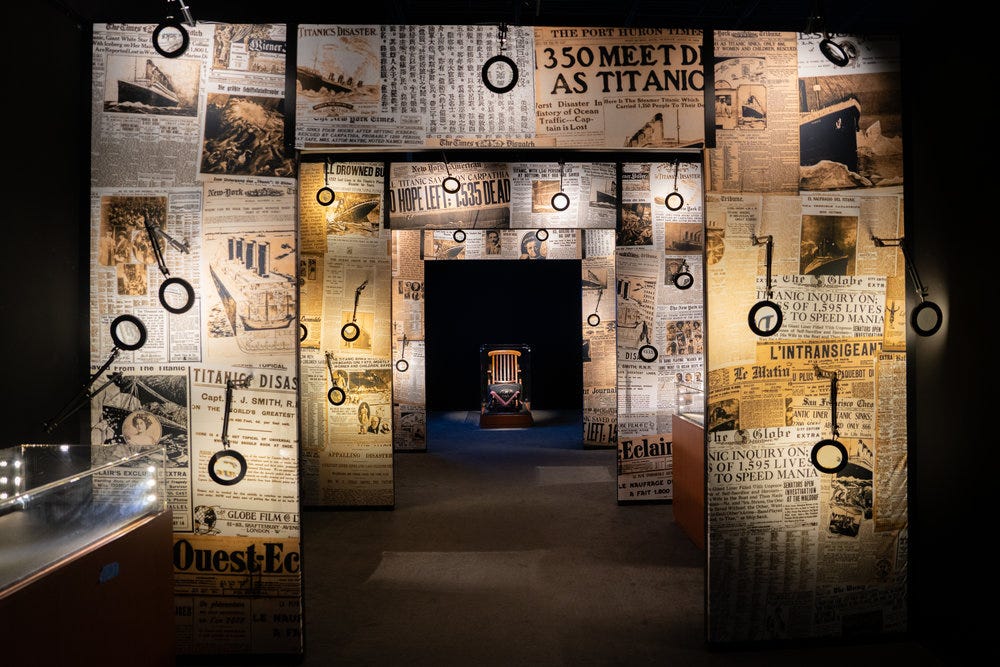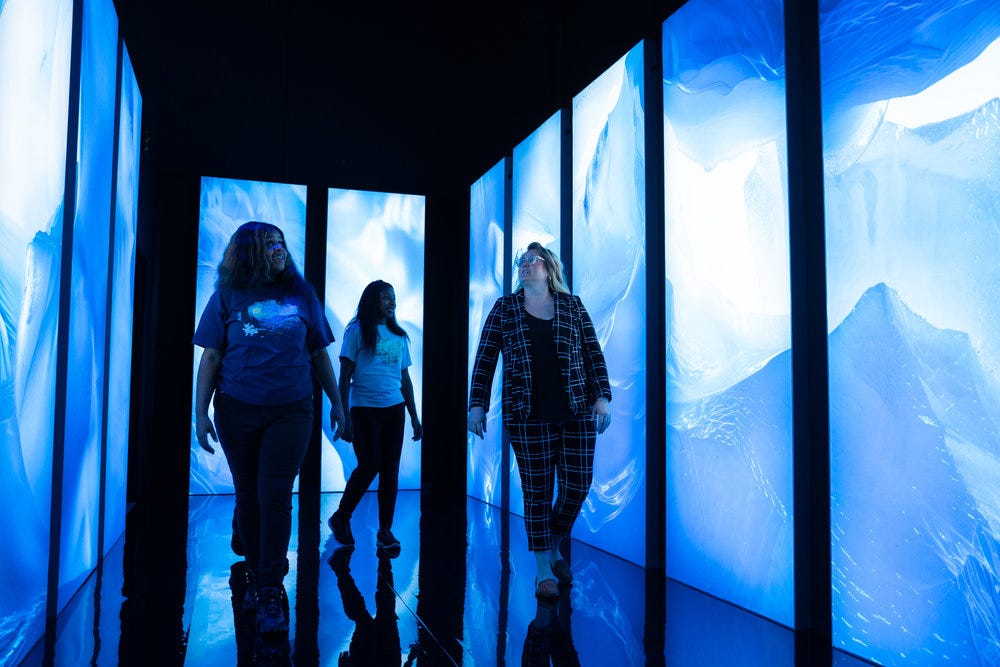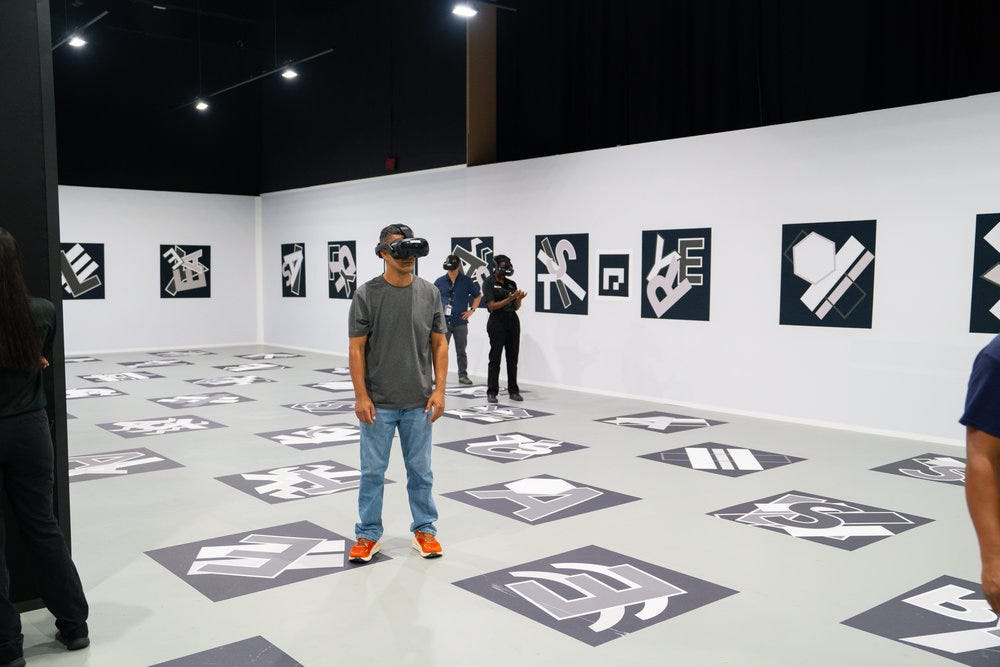Titanic: An Immersive Voyage (Exhibition Hub, Atlanta, Georgia, USA)
In the moments where Exhibition Hub's new initiative excels, it truly captivates the imagination, but where it slips, it really slides.
This is a review of Titanic: An Immersive Voyage created by Exhibition Hub, currently in Atlanta (Georgia, USA) and Milano (Italy, Europe). It is set to tour around the US and Asia from the beginning of 2025.
Titanic: An Immersive Voyage is an ambitious attempt to bring Titanic’s story to life, combining immersive environments with interactive exhibits. It delivers moments of genuine ingenuity and emotional depth, but its uneven execution left me frustrated.
Unsinkable host and good friend LA Beadles and I travelled nearly four hours to check out what promised to be a “never-before-seen, immersive experience” that blends artefacts, room recreations, virtual reality, 3D imagery, and video animations to tell Titanic’s story “like never before.”
We were, to be honest, pretty sceptical that a Titanic experience planted on the edges of Atlanta was going to offer us much value. Our scepticism felt quickly justified when the first gallery kicked things off with some pretty egregious misrepresentation of artefacts.
I immediately noticed a J. Peterman replica of Jack Dawson’s shirt being presented as the actual garment worn by Leonardo DiCaprio in James Cameron’s 1997 mega-hit, Titanic. The J. Peterman Company was authorised to produce and sell exact replicas of the film’s costumes, which remain sought after today. However, these replicas are not the original items used in the film. The shirt on display even had the J. Peterman tag visibly attached, clearly indicating its status as a reproduction rather than an authentic prop.
The same was true for the shoes claimed to have been worn by Kate Winslet during the iconic “flying” scene.
Sadly, this was a recurring issue, extending far beyond the film props. Many—if not most—items were either from Titanic’s sister ship, Olympic, or completely unrelated, yet presented with misleading labels or contexts that deliberately blurred the truth. Worse still, some artefacts were blatantly fake, further undermining the exhibition’s credibility. This persistent misrepresentation eroded trust from the outset, making it difficult to fully appreciate the genuinely original and thoughtful displays.
Meanwhile, items purported to be genuine artefacts, such as a lifebuoy from Nomadic, Titanic’s tender ship at Cherbourg, were casually hung on a hook without any protective casing. This lack of safeguarding suggests one of two troubling possibilities: either the items are fakes and treated with indifference, or they are real and demonstrate a shocking disregard for the preservation of historical artefacts. Not great either way
Scattered throughout the exhibition were several doors that left us confused. Their vague context implied a connection to Titanic, yet they clearly couldn’t be from the ship itself. Were they from Olympic? If so, there was no accompanying information to confirm this, nor any proper safeguarding to protect them from visitors’ sticky fingers. Perhaps they were simply period doors added for effect? If that’s the case, why were they intermittently protected?
Later, we were told that these doors were from Olympic, though I remain dubious. I have no evidence to counter this claim, but the lack of clear labelling and inconsistent preservation raises serious doubts about their authenticity.
As we moved on, the exhibition continued to falter in its attention to detail. The iconic grand staircase is reduced to a shallow backdrop with a couple of steps, an underwhelming representation of such a highly advertised feature.
One display detailed Titanic’s arrival in Cherbourg, France, but was paired with a photograph of Queenstown (now Cobh, Cork, Ireland), a glaring geographical error.
Several interactive exhibits were non-functional during the visit, and small but distracting oversights, such as IKEA pillows clearly visible in displays, broke the illusion of immersion and underscored a carelessness and lack of consistency prevalent throughout. We found ourselves frequently raising eyebrows at clumsily worded information panels, misleading artefacts or displays that were nearly there but missed the mark.
Things took a turn for the better as the immersive spaces came into their own. The main gallery, complete with a semi-submerged lifeboat, floating cargo and a 360° display of Titanic’s final hours, was a moving, well-thought-out and impressive experience.
Preceded by tilted galleries, the latter part of the ‘journey’ offers a genuinely innovative and disorienting experience, particularly the Marconi room and corridors. The angled design evokes an immediate sense of confusion and unease, making it one of the exhibition’s standout features. Similarly, the recreation of the boarding area is visually striking, using mirrors to create the illusion of a never-ending one-to-one scale of the once-great ship. It’s an impressive nod to the Titanic’s grandeur.
Even for us, the exhibition introduced new and lesser-known stories, including a woman who slept in a bed from Olympic for over 60 years. These fresh perspectives added depth and were complemented by striking displays.
Another standout moment was a newspaper corridor leading to a deckchair recovered from the wreckage. Walking through, it was hard not to be moved as you saw how news of the disaster unfolded around the world, culminating in a powerful encounter with the artefact itself. It was a thoughtful and poignant progression that created a genuinely emotional experience.
Another excellent feature of the exhibition was the iceberg room, a totally unique and, as far as I’m aware, unseen experience. It effectively explained the formation of Titanic’s iceberg in an engaging and educational way. Similarly, the recreations of the dining rooms were impressive, with items displayed in context to evoke the opulence of Titanic’s era. These moments showed a thoughtful approach to storytelling and added depth to the experience.
However, the VR experience was by far the highlight of the exhibition. This extraordinary feature allows visitors to interact with digital artefacts and explore the Titanic both as a wreck and in all her 1912 splendour.
You could enter the VR experience with the people you were visiting with, which provided endless amusement for LA and me. But once we found ourselves on the deck of Titanic the night of her sinking, surrounded by digital recreations of real passengers and their artefacts, the event's gravity was undeniable.
Ghostly voices recounted real passenger moments and quotes as you reached out to touch their possessions. One particularly moving moment featured Ida Straus’s famous words to her husband: “Where you go, I go. As we have lived, so will we die, together.” The 10-minute Virtual Reality experience brought both Titanic’s triumphant moments and her chilling and emotional ones to life.
It’s rare for me to encounter anything this deeply resonant in Titanic-themed exhibitions, and unlike Imagine Exhibition’s beyond-disappointing VR, this made the experience more than worth the visit.
(Note: The VR requires an additional fee on top of the admission tickets.)
Titanic: An Immersive Voyage hints at the potential for a truly groundbreaking experience. Despite its flaws, there is real heart and valiant efforts to make this exhibition stand out. The VR component and selected immersive elements prove the creators have the capability to deliver something not just profound and original but genuinely landmark in the Titanic narrative—perhaps even to match Titanic Belfast. Sadly, the misleading supporting pieces, reliance on superficial filler and blatant shortcuts cause the exhibition as a whole to fall short of its intended ambition.
Accuracy ★★☆☆☆
Immersion: ★★★★★
Scale: ★★★★☆
Overall: ★★★☆☆

